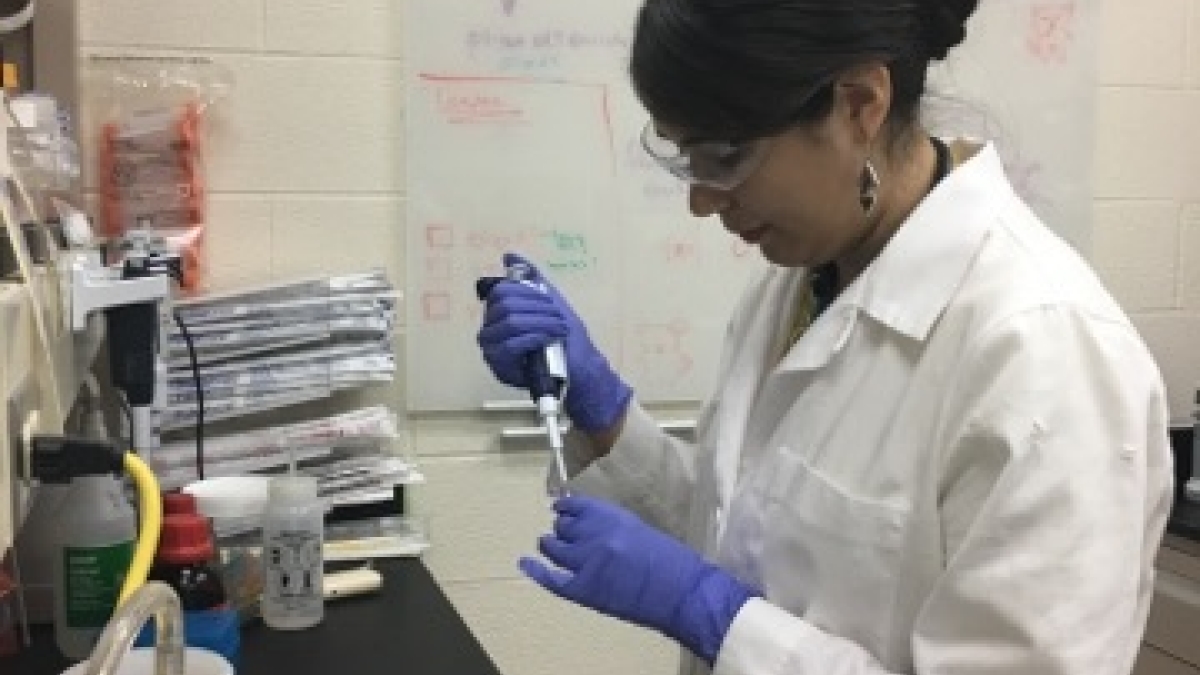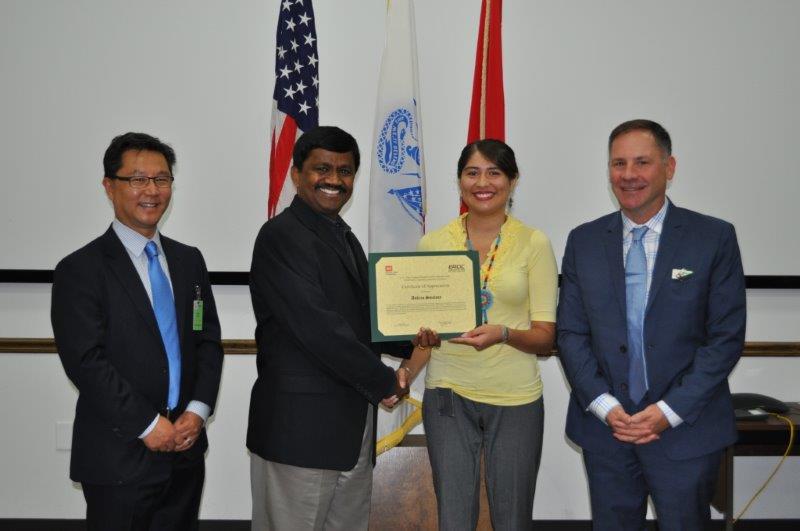ASU student represents her heritage in summer internship

Andrea Smolsey, an undergraduate in American Indian Studies and the School of Life Sciences.
Arizona State University student Andrea Smolsey went swimming with the frogs — or rather smelling with the frogs — this summer during a six-week internship at the Construction Engineering Research Laboratory in Champaign, Illinois, in which she helped develop an odor library for frogs to investigate the decline in amphibian populations.
Smolsey, an undergraduate in American Indian Studies and the School of Life Sciences, has been interested in molecular biosciences and biotechnology since high school.
After conducting a meticulous bacterial transformation experiment her junior year of high school, she expanded her research by relating her findings to diabetes. As an Apache, Smolsey was happy to personalize the project’s scope to her community because Native Americans have a greater chance of developing diabetes than any other U.S. racial group, according to the Center for Disease Control and Prevention.
“I was able to focus on a minority ethnic group, which was interesting,” said Smolsey. “The implications were profound and purposeful to give back to my people. I don’t know what else I would enjoy as much as this.”
Her passion for research followed her into college. Smolsey has conducted research in a few labs as an undergraduate at ASU. The skills she has gained came in handy when Laura Gonzales-Macias, associate director of the American Indian Student Support Services, recommended her to apply for an internship.
The U.S. Army Corps of Engineers’ Construction Engineering Research Laboratory has developed a student internship and mentoring program at their facility in Champaign, Illinois. The program gathers research to enhance the Army’s ability to design, build, operate and maintain its installations and contingency bases while ensuring environmental quality at the lowest life-cycle cost.
During her summer internship where she focused on developing the odor library for frogs, she worked toward figuring out what types of odors a frog can smell as a means of building a chemically-mediated conservation effort.
“They don’t know what kind of chemical binds to receptors and what outcome it produces,” Smolsey said. “Once they find out there is a reaction to a scent, they can test if certain smells attract or repel the frogs. And the idea behind that is, certain frog species are declining so they want to non-invasively facilitate movement of these species through chemically mediated conservation efforts.”

Left to right: Kenro Kusumi, associate dean of research and graduate initiatives; Kirankumar Topudurti, deputy director of the Construction Engineer Research Lab; Andrea Smolsey; and Paul LePore, associate dean for student and academic programs.
During her time in Illinois, and as one of the youngest students in the lab, Smolsey ran into a few challenges that helped her grow.
“Most of the other interns were undergraduate seniors who were about to graduate or had just graduated, so they kept saying how young I was and how ahead I was. There was a disconnect there, but I got used to talking with them.”
Smolsey was also one of the only Native students involved in the research. When questions about her heritage were brought up, Smolsey said she was not surprised.
She grew up on a military base with people from many different backgrounds. She had to hurdle many instances when people would ask about her heritage without being culturally sensitive. Regardless, Smolsey would answer the questions as a proud Native American.
“We just expect it sometimes,” said Smolsey. “I’m all for educating people about my heritage so I don’t mind, but it was interesting that it still happened. It’s a weird thing. You feel uncomfortable being asked these questions, but at the same time you’re prepared.”
Despite having to overcome these hurdles, Smolsey persisted.
“We need native people in these environments. I don’t see a lot of representation of natives in lab coats and goggles, specifically in that research area,” she said. “It takes a lot of strength to do, as a native person. I was given the opportunity to do research and have pictures representing myself, my family and this community very respectfully.”
She is thankful for her experience to not only participate in relevant and meaningful research, but to educate others and represent her community.
“I say only positive things came out of doing it,” she said. “I gave a presentation at the end, where I introduced myself in Apache, which I thought was amazing. You never hear about a research presentation starting in Apache, but it was done and I was the one who did it.”
More Science and technology

Breakthrough copper alloy achieves unprecedented high-temperature performance
A team of researchers from Arizona State University, the U.S. Army Research Laboratory, Lehigh University and Louisiana State…

4 ASU researchers named senior members of the National Academy of Inventors
The National Academy of Inventors recently named four Arizona State University researchers as senior members to the prestigious…

Transforming Arizona’s highways for a smoother drive
Imagine you’re driving down a smooth stretch of road. Your tires have firm traction. There are no potholes you need to swerve to…

